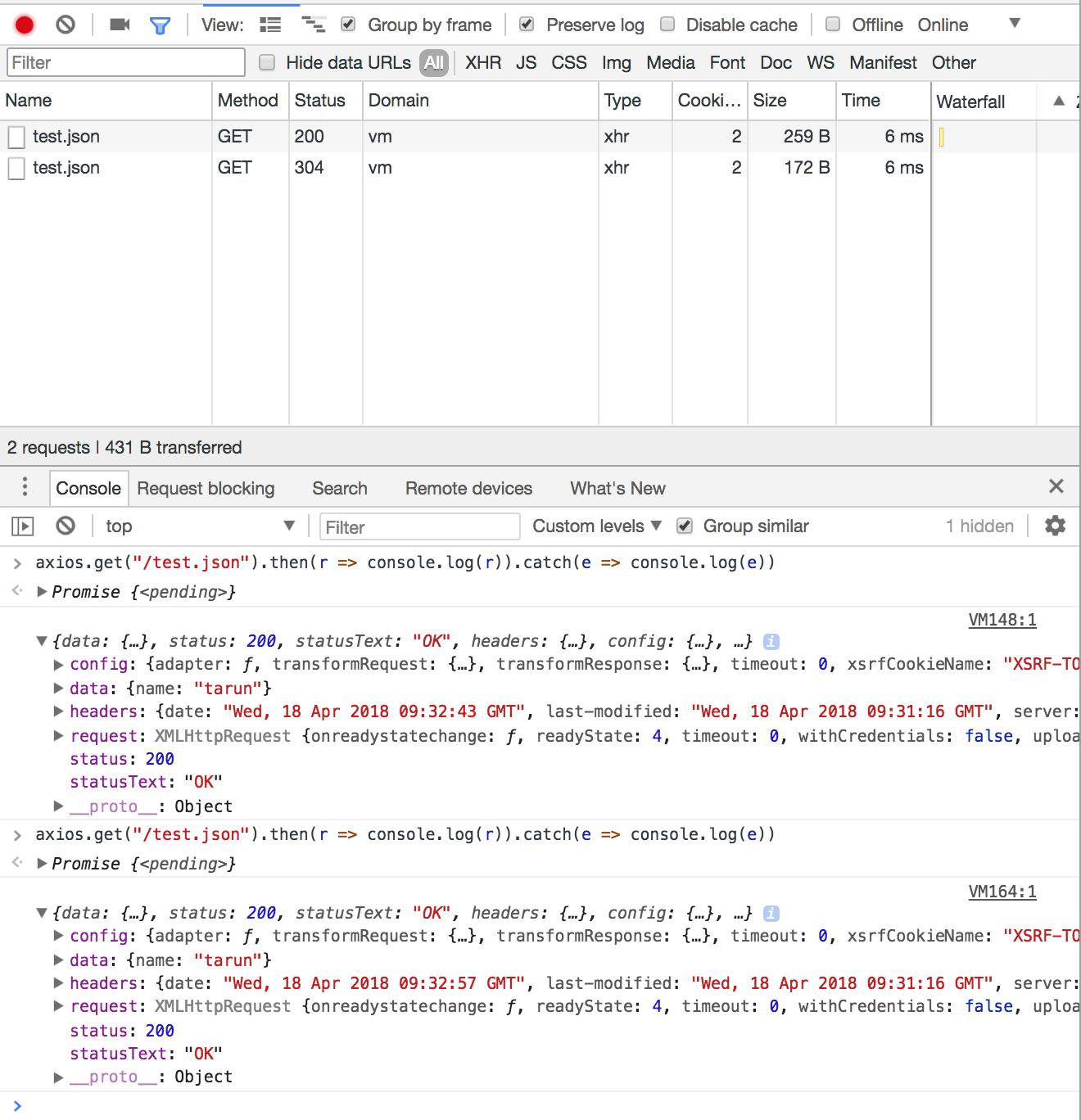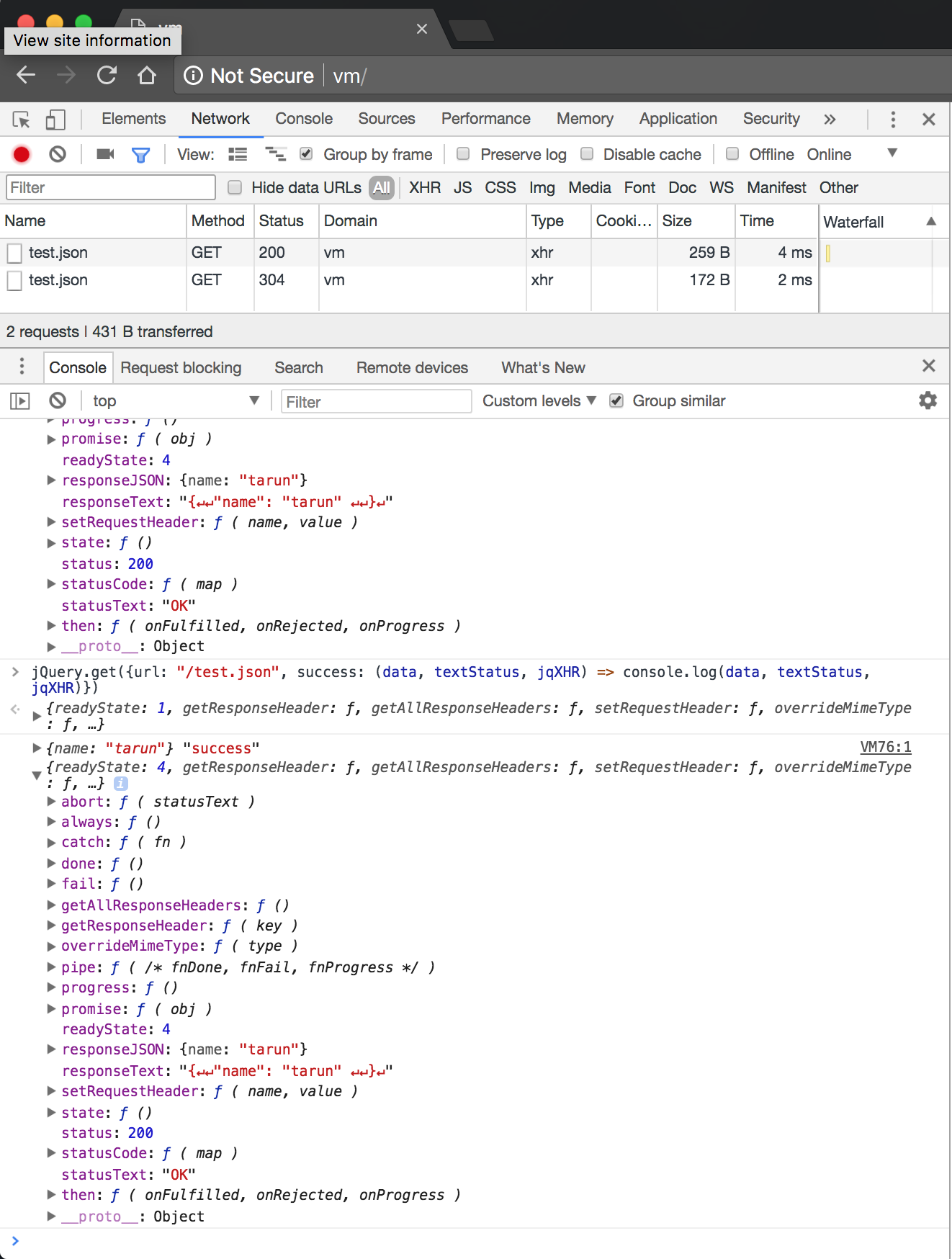Might be a silly question, but I haven't found any clear answer yet.
My server handles ETag caching for some quite big JSON responses we have, returning 304 NOT MODIFIED with an empty body if the If-None-Match header contains the same hash as the one newly generated (shallow ETags).
Are browsers supposed to handle this automagically, or do the in-browser client apps consuming the API asynchronously need to implement some logic to handle such responses (i.e. use the cached version if 304 is responded, create/update the cached version otherwise)?
Because so far, I've manually implemented this logic client-side, but I'm wondering whether I just reinvented a square wheel...
In other words, with the Cache-Control header for example, the in-browser client apps don't need to parse the value, check for max-age for instance, stores it somehow, setup a timeout, etc.: everything is handled ahead by the browsers directly. The question is: are browsers supposed to behave the same way when they receive a 304?
Here is how I wrote my client so far (built with AngularJS, running in browsers):
myModule
.factory("MyRepository", ($http) => {
return {
fetch: (etag) => {
return $http.get(
"/api/endpoint",
etag ? { headers: { "If-None-Match": etag } } : undefined
);
}
};
})
.factory("MyService", (MyRepository, $q) => {
let latestEtag = null;
let latestVersion = null;
return {
fetch: () => {
return MyRepository
.fetch(latestEtag)
.then((response) => {
latestEtag = response.headers("ETag");
latestVersion = response.data;
return angular.copy(latestVersion);
})
.catch((response) => {
return 304 === error.status
? angular.copy(latestVersion)
: $q.reject(response)
});
}
};
});
So basically, is the above logic effectively needed, or am I supposed to be able to simply use $http.get("/api/endpoint") directly?
This code above is working fine, which seems to mean that it needs to be handled programmatically, although I've never seen such "custom" implementations on the articles I read.



304 not modifiednothing is downloaded at all, only the header was. BUT you can bypass this behavior by settingCache-Control: no-cachefrom both the server or the client. You can also force the server to always serve «new content» by setting a new date, which will lead to a new etags at each request. Pretty sure the behavior exist since long ->pragma. – Ambivertangularhas a bad behavior. When winning time lead to lose it later, while feeding google database by all it can keep. To me this last reason is enough to avoid it at all prices. – Ambivert